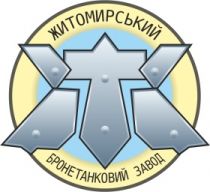Global Airborne ISR Markets, 2021-2026: Opportunities in the Modernization of Reconnaissance Equipment by Defense Forces of Several Countries - ResearchAndMarkets.com
The "Global Airborne ISR Market Forecast 2026" report has been added to ResearchAndMarkets.com's offering.
The Airborne ISR market is projected to grow from USD 9.9 billion in 2021 to USD 12.8 billion by 2026, at a CAGR of 5.1% from 2021 to 2026.
The rising demand of UAVs for airborne ISR applications, increasing procurement of Airborne ISR systems due to growing transnational and regional instability, rapid advancement in artificial intelligence, big data analytics and robotics technologies are fueling the growth of the airborne ISR market.
The Airborne ISR market includes major players Lockheed Martin Corporation (US), Northrop Grumman Corporation (US), Thales Group (France), Hensoldt AG (Germany), Leonardo SPA (Italy), BAE Systems (UK), Israel Aerospace Industries (Israel), Saab AB (Sweden), Aselsan (Turkey), Elbit Systems (Israel) and L3Harris Technologies (US.
These players have spread their business across various countries includes North America, Europe, Asia Pacific, Middle East and Rest of the World. COVID-19 has impacted their businesses as well.
The systems segment is projected to lead the airborne ISR market from 2021 to 2026.
Based on solution, the systems segment is projected to lead the airborne ISR market from 2021 to 2026. Development and procurement of modern airborne ISR systems, such as targeting and surveillance systems and communication systems, for various applications is driving the demand for airborne ISR market globally.
In February 2019, US border security agencies started using targeting and surveillance systems upon aerostats on the US-Mexico border which are particularly good at detecting low-flying aircraft, such as the ones drug smugglers use, because their radar isn't blocked by hilly terrain the way ground-based radar can be. Newer, smaller versions can fly closer to the ground and carry radar that can better identify people.
Based end user, defense segment will register the highest growth from 2021 to 2026
In the defense end user segment, airborne ISR systems are used the department of defense intelligence agencies and other government applications. Airborne ISR systems function as a data grid that collects critical information from various sensors, such as radar, sonar, and electro-optic, which are installed on various airborne platforms.
In May 2021, the US Department of Defense awarded a combined USD 950 million multiple award contracts with a firm-fixed-price task order to a total of 22 different companies which include key players like L3 Harris Communications Integrated Systems, Leidos, MAG Aero, Meta Special Aerospace, Northrop Grumman Systems Corp., Textron Corp., etc.
Contractors will provide various Foreign Military Sales (FMS) customers engineering assessments, procurement of intelligence, surveillance and reconnaissance (ISR) sensors and related equipment, integration of ISR sensors into non-standard aircraft, and contractor logistics support for non-standard aircraft with ISR sensors.
The North American region is estimated to account for the largest share of the Airborne ISR market in 2020
The Airborne ISR market in the North American region is expected to witness substantial growth during the forecast period, owing to increased investments in airborne radar technologies by countries in this region.
Defense forces of the US and Canada are involved in the development of technologically advanced radar systems for airborne platforms such as fighter aircraft and UAVs, which drives market growth. Well-established and prominent manufacturers of airborne radar systems in this region include Lockheed Martin (US), Northrop Grumman (US), L3Harris Technologies, Inc. (US), and Raytheon (US).
Market Dynamics
Drivers
- Rising Demand for Uavs for Airborne Isr Applications
- Increasing Procurement of Airborne Isr Systems due to Growing Transnational and Regional Instability
- Growing Threats of Terror Attacks and Increasing International Border Clashes
- Increasing Use of Airborne Isr-Based Geological Surveying for Scientific Research Purposes
- Increasing Need for Missile Detection Systems
- Rapid Advancements in Artificial Intelligence, Big Data Analytics, and Robotics
- Increasing Preference for Modern Warfare Techniques
Restraints
- Lack of Accuracy and Operational Complexities in Airborne Isr Technology
- High Development and Maintenance Costs
- Concerns Over Error Possibilities in Complex Combat Situations
- Regulatory Constraints in Transfer of Technology
- Declining Defense Budgets of Several North American and European Countries
Opportunities
- Technological Advancements in Isr Ecosystem
- Modernization of Reconnaissance Equipment by Defense Forces of Several Countries
Challenges
- Integrating Existing Systems with New Technologies
- Complexity in Designs of Airborne Isr Systems
Companies Mentioned
- Airbus
- Aselsan A.S.
- Bae Systems plc
- Boeing Company
- Booz Allen Hamilton
- Collins Aerospace
- Curtiss-Wright Corporation
- Elbit Systems Ltd.
- Flir Systems
- Hensoldt Ag
- Honeywell International Inc.
- Hr Smith Group of Companies
- Iabg
- Indra
- Israel Aerospace Industries
- L3Harris Technologies
- Leonardo S.P.A.
- Lockheed Martin Corporation
- Mag Aerospace
- Northrop Grumman Corporation
- Raytheon Technologies Corporation
- Rheinmetall Ag
- Saab Ab
- Textron Inc.
- Thales Group
For more information about this report visit https://www.researchandmarkets.com/r/fcx8fb
View source version on businesswire.com: https://www.businesswire.com/news/home/20210909005750/en/


